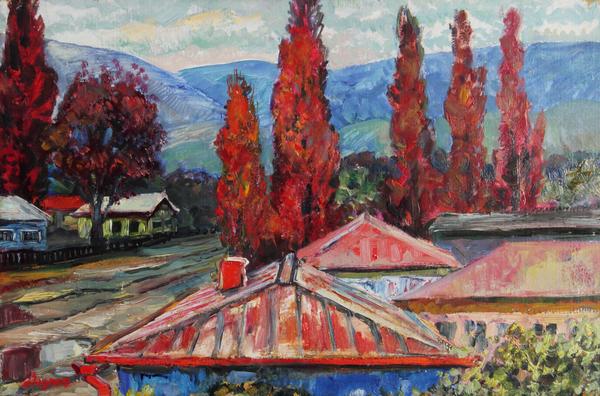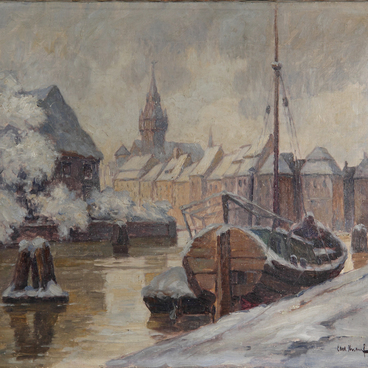Arthur Degner (1888—1972) was the only expressionist in Kȍnigsberg Academy of Arts and was considered to be a guide of new trends in art. Over his long life the artist created many portraits of his contemporaries and other pieces of art that were of success across Europe.
#4
Degner Arthur
Nida
#7
#8
Degner got acquainted with the latest trends in painting when he left Kȍnigsberg and set off to improve his professional skills first to Munich and then to Berlin. Here he absorbed the basic methods of impressionism and expressionism and soon became renowned and strongly sought-for artist. The trip to Paris that in early XX century was rightfully considered to be the global capital of contemporary art had an impact on Degner.
The triumph of Degner fell on the so called golden twenties – a short period of a relative welfare and stability in the history of Germany. In the history of German art it was marked by a mixture of realistic trends and avant-garde. During the period from 1919 through 1929 the portraits of Degner were exhibited in the galleries in Berlin, Dresden, Frankfurt-on-Mein and other large cities.
#9
Quite a lot of his early works the artist devoted to modest nature of Eastern Prussia. The painting Nida is one of them. Nida or in German Nidden is a small picturesque town on Curonian Spit where German artists used to move in to paint sketches from all over Germany. During this period expressionist trends dominated in the creativity of Degner.
#10
The canvas is notable for emotional tension arising due to intensive pure and bright colors. Degner didn’t undertake the path of simplifying the form and created a complex profound image. The town of Nida is located on the hills; behind it are the wooded dunes. Over time the artist made his palette more reticent. Here we see the contrasting cold shades of dark-blue, red and green-olive.
#12
In 1930, with the accession of national-socialists to power, the status of Degner severely shattered. His paintings didn’t correspond to the political interests and soon were declared as degenerative – thus fascists called the art of artists of avant-garde trends out of their favor.
At the beginning of the Second World War the artist taught drawing at the ordinary children’s school but soon he was prohibited to do it. He could completely return back to the creativity only after the war having become a professor of Berlin Academy of Arts.
#13
Kȍnigsberg Museum of Fine Arts
читать дальшескрыть
00:00
00:00
1x
Nida
Время создания
1910-1920
Размер
40x61 cm
Техника
Сardboard, oil
6
Открыть в приложении
Поделиться



